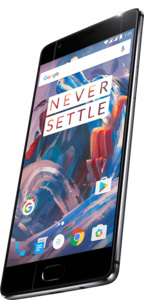Latest news
 |
Roborock Saros 10 review - Great, but not perfect (14 May 2025 5:54)
We tested Roborock Saros 10 robot vacuum for more than two months in order to see whether it is really worth its hefty price tag. The mopping, self-emptying Saros 10 was mostly great, even perfect. But its object avoidance was bit disappointing.
|
 |
Napster Sold – Yet Again (27 Mar 2025 1:16)
The world’s most iconic peer-to-peer music-sharing platform, once infamous for its role in digital piracy, has once again been sold.
|
 |
YouTube viewing now happens in TVs (11 Feb 2025 2:43)
Smartphones are no longer the primary device for watching YouTube. Instead, televisions—those big screens in our living rooms—have taken the top spot as the most-used platform for YouTube viewing at home.
|
 |
Sony to end production of writable Blu-ray discs, MiniDiscs and MiniDV tapes (24 Jan 2025 11:27)
Sony has announced that it will halt the production of writable Blu-ray discs, MiniDiscs, and MiniDV tapes in February 2025.
|
 |
Nintendo announces Switch 2 - Long video released, but specs still under wraps (16 Jan 2025 11:33)
After years of anticipation, Nintendo has officially unveiled its next-generation console, the Nintendo Switch 2, in a newly released promotional video. However, the company has yet to reveal the exact technical specifications, promising to share mor
|
Reviews
 |
Roborock Saros 10 review - Great, but not perfect
We tested Roborock Saros 10 robot vacuum for more than two months in order to see whether it is really worth its hefty price tag. The mopping, self-emptying Saros 10 was mostly great, even perfect. But its object avoidance was bit disappointing.
|
 |
Roborock S8 MaxV Ultra review - obstacle avoidance doesn't work as it should, otherwise almost perfect robot vacuum
We put the Roborock S8 MaxV Ultra through a very, very long review process. The $1800 mopping robot vacuum is almost perfect, but its obstacle avoidance was surprisingly bad, considering the price - and compared to its competitors.
|
 |
Sharge x OnePlus Pouch review: Beautiful power bank that supports SuperVOOC charging
In our review, we take a look at Sharge's power bank that supports OnePlus SuperVOOC quick charging technology as well as standard USB PD charging. It has small design flaws, but despite those, the Pouch is very nice product.
|
News archive
 The small Chinese smartphone maker OnePlus took the world by storm two years ago by releasing a super cheap flagship smartphone. They called it the flagship killer, and it indeed challenged the best Android smartphones without big drawbacks and with a tiny price tag. Now the company has revealed this years model.
The small Chinese smartphone maker OnePlus took the world by storm two years ago by releasing a super cheap flagship smartphone. They called it the flagship killer, and it indeed challenged the best Android smartphones without big drawbacks and with a tiny price tag. Now the company has revealed this years model.












